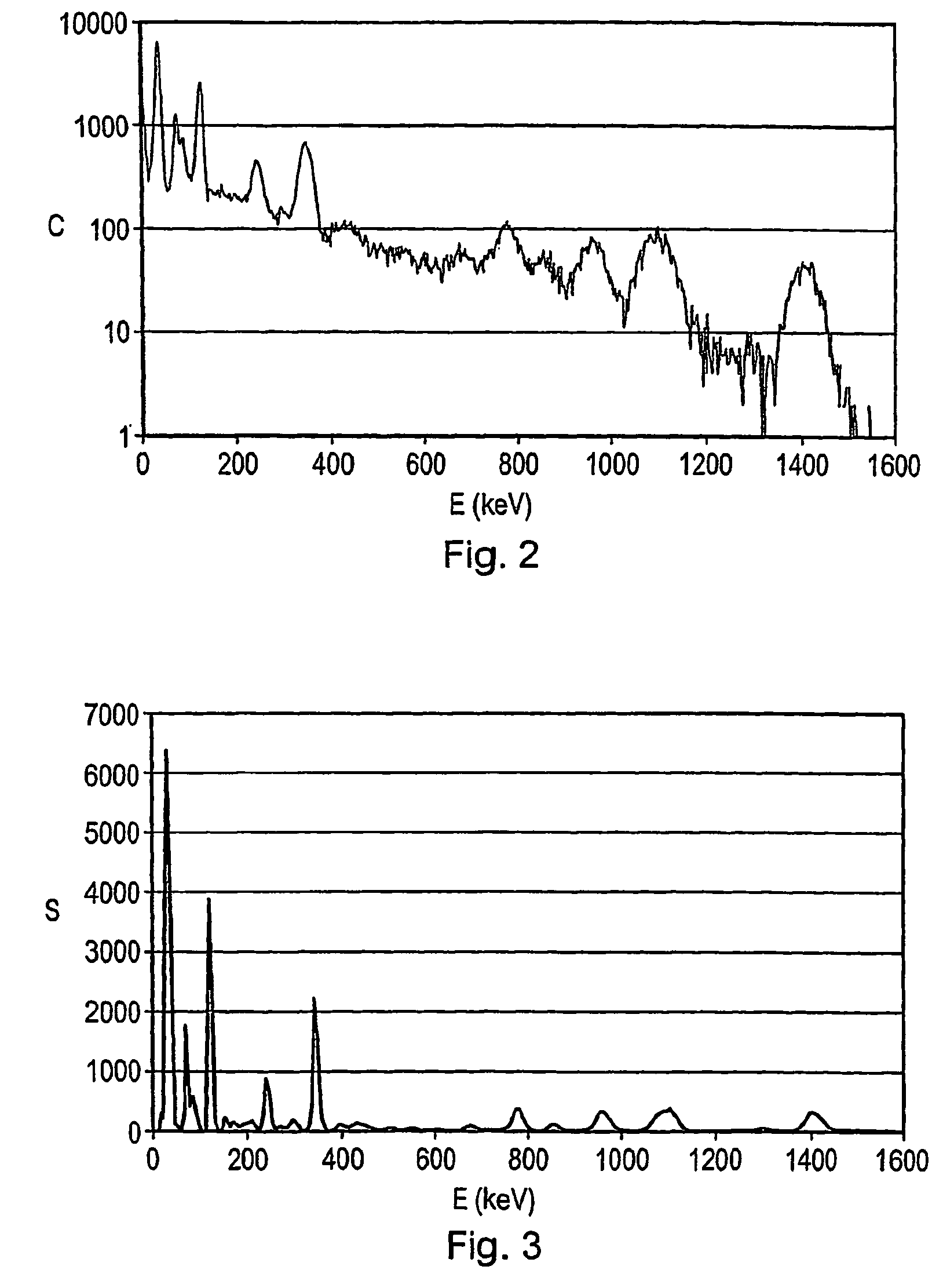Radioactive isotope identification
a radioactive isotope and radioactive technology, applied in the field of radioactive isotope identification methods and apparatuses, can solve the problems of requiring relatively little computing power, and achieve the effect of reducing the risk of overestimating the contribution and “too much” of the signal
- Summary
- Abstract
- Description
- Claims
- Application Information
AI Technical Summary
Benefits of technology
Problems solved by technology
Method used
Image
Examples
Embodiment Construction
[0049]FIG. 1 shows a flow chart schematically representing a method of identifying radioactive isotopes in an environment according to an embodiment of the invention. Execution the method from start to finish may be referred to as performing a scan, e.g. of an object in the environment. The method is applicable generally to many environments and situations, but by way of example it will be assumed here that the method is used to monitor (i.e. scan) cargo passing through a port in the context of policing the tracking of illegitimate radioactive isotopes.
[0050]Before describing on the method steps in more detail, a brief summary of the overall way in which the method of the embodiment shown in FIG. 1 operates is provided. The method operates by seeking to identify isotopes present in a source of gamma-rays in an iterative fashion. Each iteration seeks to identify an isotope, i.e. isotopes are identified one-at a time. An iteration comprises steps S6 to S16 (i.e. repeated iterations co...
PUM
 Login to View More
Login to View More Abstract
Description
Claims
Application Information
 Login to View More
Login to View More - R&D
- Intellectual Property
- Life Sciences
- Materials
- Tech Scout
- Unparalleled Data Quality
- Higher Quality Content
- 60% Fewer Hallucinations
Browse by: Latest US Patents, China's latest patents, Technical Efficacy Thesaurus, Application Domain, Technology Topic, Popular Technical Reports.
© 2025 PatSnap. All rights reserved.Legal|Privacy policy|Modern Slavery Act Transparency Statement|Sitemap|About US| Contact US: help@patsnap.com



